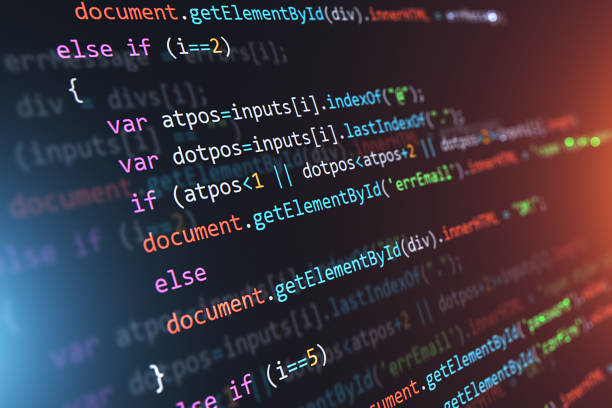Introduction
When it comes to technical interviews for Java developer roles, mastering string manipulation is often a key component of success. String manipulation questions are commonly asked to assess a candidate’s knowledge of core Java concepts and their ability to work with one of the fundamental data types in programming – strings. In this blog, we’ll dive deep into the world of string manipulation in Java interviews and provide valuable tips for handling core Java interview questions related to strings.
Understanding the Significance of String Interview Questions in Java
String manipulation questions are an integral part of Java interviews for several reasons. First and foremost, strings are used extensively in Java applications. Whether it’s processing user input, reading and writing to files, or working with database records, you’ll find strings at the heart of many Java programs. Therefore, a solid understanding of string manipulation is crucial for any Java developer.
Additionally, string manipulation questions test your ability to work with a wide range of Java concepts, including:
- Syntax and Semantics: Demonstrating a strong grasp of Java syntax and semantics is essential. You need to show that you can write code that adheres to Java’s strict rules.
- Data Structures: Strings can be thought of as character arrays, and manipulating them often involves using various data structures like arrays and lists.
- Algorithms: String manipulation questions often require you to implement algorithms to solve specific problems efficiently.
- Built-in Methods: Java provides a plethora of built-in methods for string manipulation, and you should be familiar with them.
- Complex Problem Solving: String interview questions can be quite challenging and demand creative and efficient solutions.
To help you ace your next Java interview, let’s explore some essential tips for handling string manipulation questions.
Tips for Core Java Interview Questions
Here are the tips for the Core Java Interview Questions:-
1. Understand the Basics
Before diving into more complex string manipulation problems, ensure you have a strong grasp of the basics. Know how to create, initialize, and manipulate strings in Java. Understand concepts like string immutability and how it affects string operations.
2. Built-In Methods
Familiarize yourself with the various built-in methods for string manipulation in Java. Some of the most commonly used methods include `charAt()`, `length()`, `substring()`, `indexOf()`, `split()`, and `replace()`. Be prepared to use these methods to solve problems efficiently.
3. String Concatenation
String concatenation is a common operation. Understand the different ways to concatenate strings, including using the `+` operator and `StringBuilder` (for efficiency in cases involving many concatenations).
4. Palindrome Detection
Palindrome detection is a classic string manipulation problem. You may be asked to determine whether a given string is a palindrome. Understanding how to iterate through a string, possibly in reverse, and compare characters is essential for such questions.
5. Anagram Detection
Anagram detection problems involve checking if two strings have the same characters in different orders. You’ll need to work with character frequencies and possibly use data structures like hash maps to efficiently solve such questions.
6. String Reversal
Reversing a string is another common string manipulation task. You should be able to do this both iteratively and recursively.
7. Regular Expressions
Regular expressions are powerful tools for pattern matching in strings. Familiarize yourself with basic regular expressions and understand when and how to use them in Java.
8. Efficiency Matters
Efficiency is crucial, especially in interviews. When solving string manipulation problems, consider the time and space complexity of your solutions. Be ready to optimize your code if necessary.
9. Practice, Practice, Practice
The more you practice string manipulation problems, the more confident you’ll become. Use online coding platforms and resources like LeetCode, HackerRank, and GeeksforGeeks to hone your skills.
10. Edge Cases and Error Handling
Always consider edge cases and handle potential errors in your code. String manipulation problems may involve unexpected input, so make sure your code is robust.
11. Communication Skills
During the interview, communicate your thought process clearly. Explain your approach, ask clarifying questions, and engage with the interviewer. This not only demonstrates your problem-solving skills but also your ability to work effectively in a team.
12. Ask for Feedback
If you receive feedback on your interview performance, take it seriously. Use it as an opportunity to learn and improve. String manipulation questions can vary in complexity, so adapting your approach based on feedback is valuable.
Sample String Interview Questions in Java
To put these tips into practice, let’s explore a few sample string interview questions in Java you might encounter in a interview.
Question 1: Reverse a String
Problem: Write a Java function to reverse a given string.
Solution:
“`java
public static String reverseString(String input) {
StringBuilder reversed = new StringBuilder();
for (int i = input.length() – 1; i >= 0; i–) {
reversed.append(input.charAt(i));
}
return reversed.toString();
}
“`
Question 2: Check for Palindrome
Problem: Write a Java function to determine if a given string is a palindrome (reads the same forwards and backward).
Solution:
“`java
public static boolean isPalindrome(String input) {
input = input.toLowerCase();
int start = 0;
int end = input.length() – 1;
while (start < end) {
if (input.charAt(start) != input.charAt(end)) {
return false;
}
start++;
end–;
}
return true;
}
“`
Question 3: Anagram Detection
Problem: Write a Java function to determine if two strings are anagrams of each other.
Solution:
“`java
public static boolean areAnagrams(String str1, String str2) {
if (str1.length() != str2.length()) {
return false;
}
int[] charCount = new int[26]; // Assuming only lowercase alphabets
for (char c : str1.toCharArray()) {
charCount[c – ‘a’]++;
}
for (char c : str2.toCharArray()) {
if (charCount[c – ‘a’] == 0) {
return false;
}
charCount[c – ‘a’]–;
}
return true;
}
“`
These sample questions demonstrate the importance of understanding basic string manipulation concepts in Java and applying them to solve common problems.
Conclusion
Mastering string manipulation is essential for acing Java interviews. It not only showcases your knowledge of core Java concepts but also demonstrates your problem-solving skills. By understanding the basics, practicing, and following the tips provided in this blog, you’ll be well-prepared to tackle string interview questions in Java.
Remember, interview success is not just about solving problems; it’s about communicating effectively with the interviewer, handling edge cases, and continuously improving your skills. So, keep practicing, stay confident, and go nail those Java interviews!
In summary, when preparing for core Java interview questions, pay special attention to string manipulation, as it is a fundamental aspect of Java development. Understanding the basics, familiarizing yourself with built-in methods, and practicing common string manipulation problems will help you stand out as a confident and competent Java developer. Best of luck in your Java interviews!





